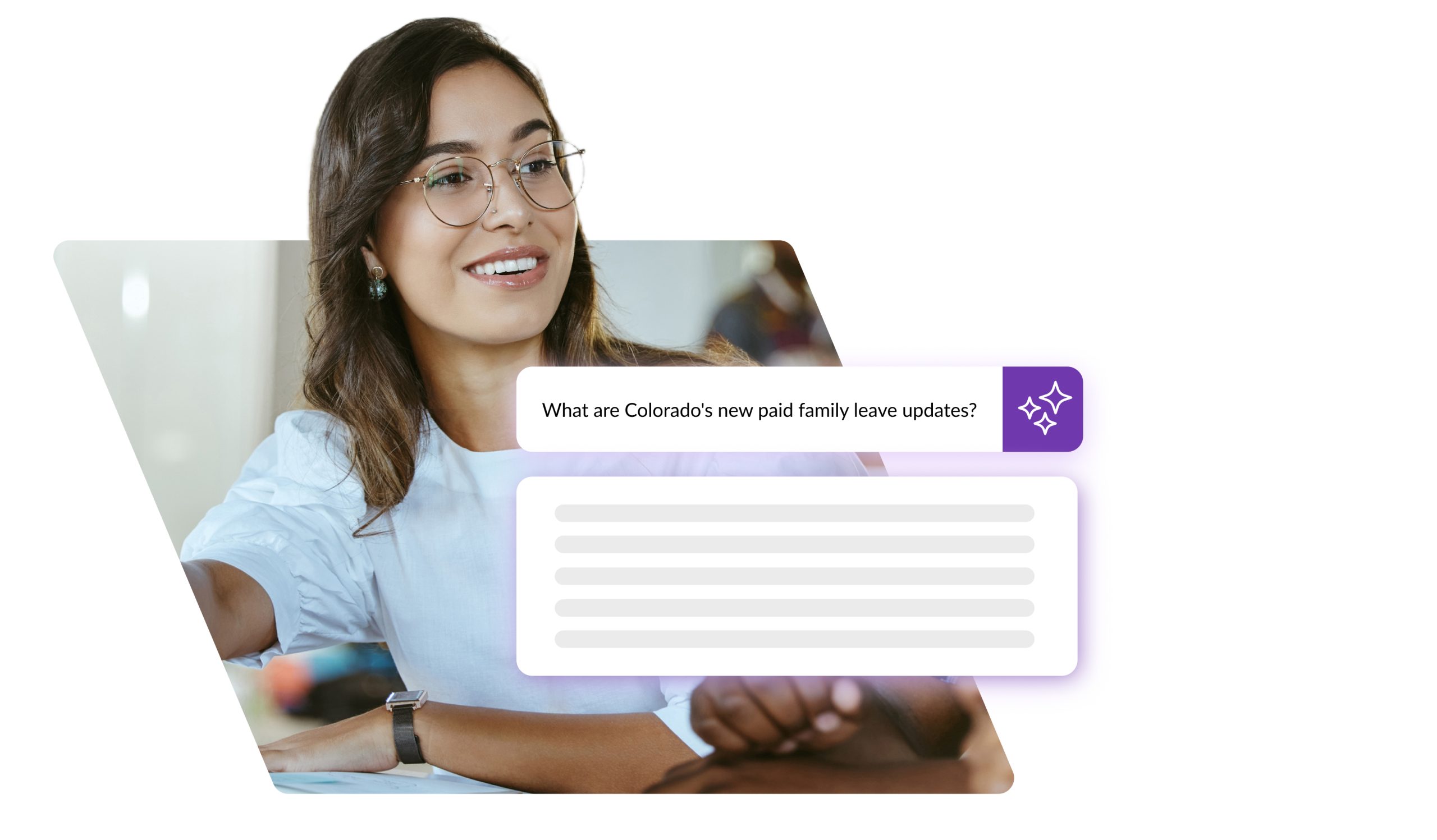Staying ahead of employment-law changes is one of HR’s toughest responsibilities—and one of the most important for protecting your company.
January 1st and July 1st typically tend to be two of the biggest days for state-level legislations to go into effect. So with the New Year approaching, that means now is the perfect time for HR professionals to review key changes from last year, make sure they are in compliance with recent changes if they aren’t already, and prepare for what’s coming starting on January 1, 2026.
This article summarizes the most important legal changes going into effect at the start of the year, along with practical guidance on how HR teams can prepare:
But first: Let’s look back on what happened 2025
Federal landscape shifts with new administration
2025 opened with major reversals in federal policy. The new administration formally ended the proposed federal non-compete ban and abandoned efforts to raise exempt-salary thresholds. These had been heavily litigated throughout the final year of the Biden Administration, and HR teams who spent much of 2024 preparing for federal changes suddenly saw those issues fall by the wayside.
The whiplash of federal action and court challenges in 2024 mostly fizzled out in 2025, with the first year of the second Trump Administration mostly seeing reduced activity from the NLRB and Department of Labor—a signal for HR teams that there might not be a whole lot to monitor on the federal front for 2026.
Sick leave dominates 2025 state-level activity
Sick leave was one of the most active areas of state legislation in 2025:
- Michigan implemented a long-delayed sick leave law, with requirements taking effect in February and October depending on employer size.
- Missouri enacted, activated, and quickly repealed a statewide paid sick leave law—one of the most unusual developments of the year.
- Nebraska implemented new sick leave requirements on October 1.
- Several states expanded existing programs by increasing available time or adding new qualifying reasons.
For HR teams, this trend shows no sign of slowing—state and local sick-leave rules are becoming increasingly complex, highly localized, and fast-moving.
Other major themes: AI regulation, pay transparency, and protected characteristics
States including Colorado, Illinois, New Jersey, and California made significant moves to regulate employer use of artificial intelligence. Meanwhile, wage transparency laws continued to spread, and many states added new protected characteristics to their anti-discrimination statutes. These themes are expected to continue shaping HR compliance in 2026.
Jan. 1st updates: Minimum wage & non-competes
Minimum wage increases across dozens of jurisdictions
Minimum wage increases take effect January 1, 2026, in numerous states and major localities. Here are those states and localities, alongside their new minimum wage:
- Arizona – $15.15/hr
- California – $16.90/hr
- Colorado – $15.16/hr
- Connecticut – $16.94/hr
- Hawaii – $16/hr
- Maine – $15.10/hr
- Michigan – $13.73/hr
- Minnesota – $11.41/hr
- Missouri – $15/hr
- Montana – $10.85/hr
- Nebraska – $15/hr
- New Jersey – $15.92/hr
- New York – $16/hr
- Ohio – $11/hr
- Vermont – $14.42/hr
- Virginia – $12.77/hr
- Washington – $17.13/hr
- Boulder (CO) – $16.82/hr
- Boulder County (CO) – $17.99/hr
- Denver (CO) – $19.29/hr
- Edgewater (CO) – $18.17/hr
- Minneapolis (MN) – $16.37/hr
- New York City (NY) – $17/hr
- Suffolk County (NY) – $17/hr
- Westchester County (NY) – $17/hr
- Seattle (WA) – $21.30/hr
These increases matter not only for direct wage compliance but also because they can trigger other statutory thresholds—for example, exempt classifications or non-compete eligibility could come into play in certain states once particular employees start making more than they were last year.
Non-compete salary thresholds are rising
Several states limit non-competes to “highly compensated” employees who earn above a specific threshold. These thresholds shift annually because they’re typically tied to one of three data sources:
- Consumer Price Index (CPI)
- Federal poverty levels
- State minimum wage
As a result, Colorado, Maine, Maryland, Rhode Island, Oregon, Washington, and Washington, D.C. will all see threshold changes (at which non-competes will be enforceable or not) in early 2026. Some take effect January 1, while others update after mid-January data releases for the aforementioned data sources. Employees who were previously above the required threshold may fall below it after adjustments—potentially invalidating existing non-competes and requiring employers to update agreements.
Jan. 1st updates: Paid & unpaid Family and Medical Leave: Expansions and new programs
Unpaid FML changes
Several states continue expanding unpaid family and medical leave by:
- Lowering employer-size thresholds
- Extending available leave beyond 12 weeks
- Adding new qualifying reasons (such as genetic testing or care for certain conditions)
Growth of state Paid Family & Medical Leave (PFML)
Paid family and medical leave is one of the fastest-growing areas in employment law. Thirteen states plus D.C. now offer paid leave funded through payroll taxes. Several states have major implementation dates approaching.
Additional January 1, 2026 PFML expansions
- Colorado adds up to 12 additional weeks for NICU-related care.
- Rhode Island expands Temporary Caregiver Insurance from 7 to 8 weeks.
- Washington increases job protections and expands eligibility.
PFML implementation impacts payroll, policy updates, employee communications, and leave administration. States are still refining their programs, meaning continued changes are likely throughout 2026.
Jan. 1st updates: Pay transparency & pay stub compliance
Several states implemented new pay transparency laws in 2025, including Ohio (Cleveland), Delaware, Illinois, New Jersey, Massachusetts, Vermont, and Washington. These vary widely but typically include:
- Posting pay ranges in job advertisements
- Providing benefit descriptions
- Retaining wage-history and job-description records
- Submitting reports to state agencies
Additionally, California has a change to its pay transparency law going into effect on January 1st that now requires job listings to include:
- A “good faith estimate” of total compensation in job postings
- Inclusion of all wage forms (bonuses, stock options, benefits, etc.)
- Three-year retention of job titles and wage histories
A few additional changes in two states include requirements for pay stubs:
- Oregon (Jan. 1, 2026): Employers must provide detailed written explanations of all potential earnings and deductions at the time of hire and keep this information accessible and updated annually.
- Ohio (April 9, 2025): Expanded pay stub requirements, including hours worked and overtime details for hourly employees.
AI regulation & employment discrimination: Will this be 2026’s hot-button issue?
Nearly all current AI regulation is designed to prevent discrimination in employment decisions. That’s why AI oversight and EEO compliance are becoming increasingly interconnected.
Colorado’s Artificial Intelligence Act
Taking effect June 30, 2026, Colorado’s AI Act requires employers using “high-risk” AI systems to exercise “reasonable care” to prevent algorithmic discrimination. Employers can establish a rebuttable presumption that they’ve taken care to avoid discrimination by:
- Conducting impact assessments (bias audits)
- Implementing risk-management policies
- Making public disclosures
- And notifying consumers and the state when discrimination is detected
Illinois & California: Applying discrimination law directly to AI
Both states amended their existing anti-discrimination laws to make clear that using AI in a discriminatory way is still unlawful. California added robust record-keeping requirements and a safe harbor for employers who conduct bias testing. New Jersey clarified that existing anti-discrimination laws already apply to AI—even without new legislation. This interpretation could easily spread nationwide and should be viewed as a warning sign for employers in all states.
HR teams must ensure transparency, documentation, and bias testing when using any AI-driven hiring or performance tools. This is important even in states without dedicated AI laws, and the growth of AI-related legislation (or clarification of existing laws around protected classes) continues to grow.
Our 2026 prediction: More state action, more complexity
Employment law complexity is accelerating, not slowing down. Minimum wage changes, non-compete thresholds, paid family leave programs, AI regulation, and pay transparency laws will all continue expanding in 2026 and beyond.
That’s why HR leaders need tools that can keep up.



